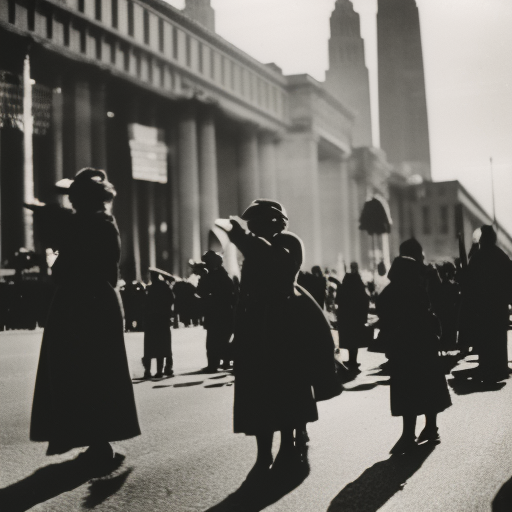Summary: Women’s March
The Women’s March is a global movement that began in 2017 as a response to the inauguration of President Donald Trump in the United States. It aimed to advocate for women’s rights, gender equality, and social justice. The march quickly gained momentum and spread to cities around the world, becoming one of the largest single-day protests in history.
Background
The Women’s March was organized in response to the divisive rhetoric and policies of the Trump administration, which many felt threatened women’s rights and marginalized communities. The movement sought to unite people from all walks of life, regardless of gender, race, religion, or sexual orientation, to stand together in solidarity and demand change.
The Inaugural March
On January 21, 2017, the day after President Trump’s inauguration, millions of people took to the streets in cities across the United States and around the world. The main Women’s March took place in Washington, D.C., with an estimated 500,000 participants. Sister marches were held in over 600 cities globally, with an estimated total of 5 million people participating.
Key Issues
The Women’s March focused on a wide range of issues, including reproductive rights, equal pay, LGBTQ+ rights, racial justice, immigration reform, and climate change. Participants carried signs and chanted slogans advocating for these causes, expressing their concerns and demanding action from policymakers.
Impact and Legacy
The Women’s March had a significant impact on public discourse and activism. It energized and mobilized a new generation of activists, many of whom had never participated in protests before. The movement inspired people to get involved in local politics, run for office, and engage in grassroots organizing.
Subsequent Marches
Following the initial Women’s March in 2017, subsequent marches were held annually on the anniversary of the inaugural march. These marches continued to draw large crowds and address a wide range of social and political issues. The movement also expanded its focus to include voter registration and turnout efforts, aiming to translate the energy of the marches into tangible political change.
Controversies
The Women’s March faced some controversies and internal divisions. Critics accused the movement of lacking a clear agenda and being too focused on identity politics. There were also allegations of anti-Semitism within the leadership, which led to the splintering of some local chapters and the formation of alternative women’s groups.
Global Impact
The Women’s March had a global impact, inspiring similar movements and protests in countries around the world. Women and allies in countries such as Canada, the United Kingdom, Australia, and many others organized their own marches to advocate for gender equality and social justice.
Continued Activism
While the Women’s March has faced challenges and evolved over time, it continues to be a symbol of resistance and a platform for activism. The movement remains committed to fighting for women’s rights and social justice, using various strategies such as grassroots organizing, advocacy, and voter mobilization.
In conclusion, the Women’s March is a global movement that emerged in response to the Trump administration’s policies and rhetoric. It has become one of the largest protests in history, advocating for women’s rights, gender equality, and social justice. The movement has inspired activism, mobilized new generations of activists, and sparked similar protests worldwide. Despite controversies and challenges, the Women’s March remains a powerful force for change and continues to fight for a more equitable and inclusive society.












